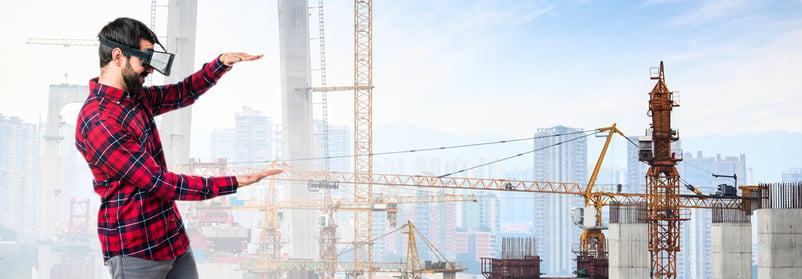Introduction
Unity3D is a real-time 3D rendering and physics engine, which is used to build 3D interactive applications like games, simulations, Augmented Reality (AR) and Virtual Reality (VR) applications, etc. Unity came into being in the year 2003 as an engine to develop applications and games on the Mac OS. Today, it has become the de-facto standard to build 3D interactive applications.
Off late, with the advent of augmented and virtual reality hardware, Unity has been very quick to integrate technology that enables rapid development of applications for such hardware. Courtesy to Unity’s focus on keeping things simple for the developer, developing an augmented or virtual reality app does not involve any additional complexity as compared to developing app for a regular 3D application or game.
Following are some of the important industries that use AR and VR:
Construction Industry

In the construction industry, the use of VR can facilitate the following:
-
Increased Collaboration
When a construction site is modelled accurately in VR, it becomes easy for members of a construction team, which may be spread out geographically, to collaborate and share context. Team members can walk through the 3D construction site ‘together’ in VR as they analyze and take decisions about the upcoming construction site. -
Standardized Process and Sharing Learnings Across Projects
Due to the inherent variety in the nature of construction projects, it is hard to implement the learnings of one project onto another. However, since VR enables an easy sharing of the 3D model of the site across teams working on diverse projects, it is possible for those diverse teams to provide key insights for a project even if they cannot be physically present to inspect the site. These insights can add value to a construction process. -
Easier Sales and Post Sales Interactions With End Users
As the end users of VR need not visit the site or depend purely on the verbal account of the sales teams, they can walk through and experience the outlook of a future project. This helps customers in getting a clear picture of their prospective purchase and can help in converting potential clients into real customers. Secondly, once they have made the purchase, they can track changes by the construction company in a far more transparent way. Both of these aspects help increase customer confidence in the construction enterprise.
Training

VR applications can be used to develop real world 3D simulations to train personnel on new machines or medical procedures without having to provide for a real machine or to risk a patient’s health for the purpose of learning. The amount of fidelity that VR simulation environments provide is very high and the trainees may actually feel as if they are learning in the real world as against a fake or dummy environment making for a deeper and clearer learning of the subject at hand.
For example, consider a complex procedure related to anaesthesiology. Traditionally, junior doctors would need to learn theory and then become proficient by observing senior doctors and work under supervision. As against this scenario, a VR environment can simulate the real-life situation of a patient undergoing the procedure in a very realistic operation theatre. In the simulation, there is no risk of any harm to the patient. At the same time, the patient and the environment can be modelled fairly accurately to allow the doctors to perfect their skills in the most cost effective and risk free manner.
Conclusion
As Augmented and Virtual Reality hardware matures with time, so too will the applications which make use of this technology. In areas like construction and medicine in particular, Augmented and Virtual Reality applications have a lot to offer in terms of improving collaboration and training. In conclusion the adoption of AR and VR is bound to see an explosion for enterprise users as the advancement in VR and AR technology is bound to reach an inflection point, where these technologies will be far more accessible and matured. Also Unity being an early partner of the big players in the AR/VR ecosystem is bound to stay for a long time as major middleware provider in the space.
Disclaimer: All views expressed in this blog are my own and do not represent the opinions of any entity whatsoever with which I have been, am now or will be associated.
About Innominds
Innominds is a leading Digital Transformation and Product Engineering company headquartered in San Jose, CA. It offers co-creation services to enterprises for building solutions utilizing digital technologies focused on Devices, Apps, and Analytics. Innominds builds better outcomes securely for its clients through reliable advanced technologies like IoT, Blockchain, Big Data, Artificial Intelligence, DevOps and Enterprise Mobility among others. From idea to commercialization, we strive to build convergent solutions that help our clients grow their business and realize their market vision.
Interested! For any demos or project discussions, please write to us at marketing@innominds.com and know more about our offerings.




